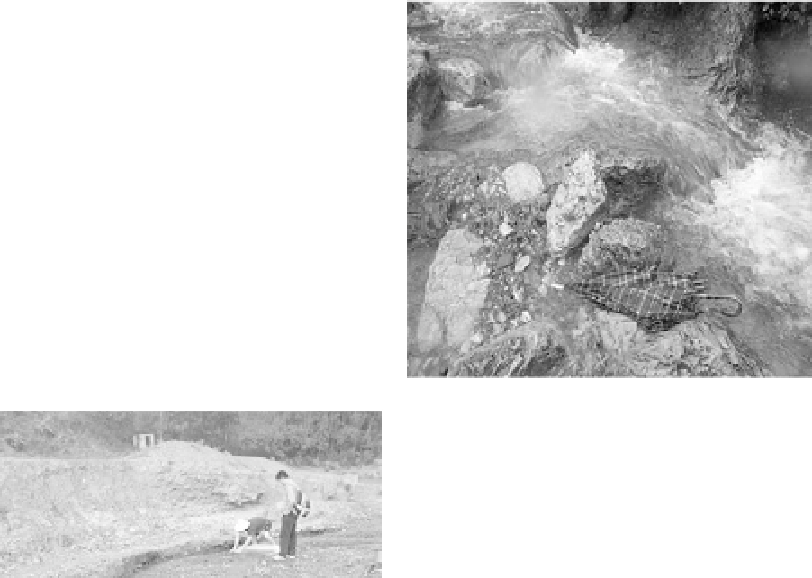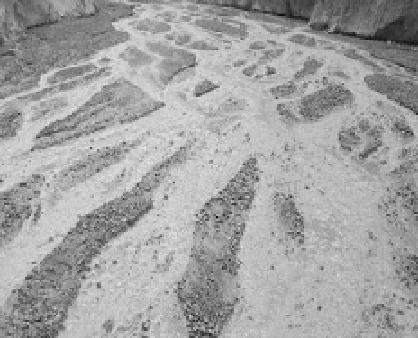Environmental Engineering Reference
In-Depth Information
the stones. The shallow and deep waters and high and low velocities of flows provide high diversity of
habitat for a high diversity of species. The pools provide refuge for juvenile fishes and in dry years may
preserve water and serve as oases for faunal species.
(a) (b)
(c) (d)
Fig. 3.23
(a) A step-pool system develops in a high gradient stream channel- Shenggou Creek; (b) Step—pool causes
hydraulic jumps; (c) No step-pool system in the Jiangjia Ravine, which is about 16 km from Shengou Creek; (d) No
step-pool system in the Xiaobaini Ravine (8 km away from Shengou Creek) (See color figure at the end of this topic)
A step-pool system develops in the process of channel incision, in cases of insufficient sediment
supply from upstream. For instance, a step-pool system developed in Shengou Creek in the past 30 years
after extensive erosion control and reforestation projects were implemented in the drainage area of the
creek. Before 1976 debris flows frequently occurred in Shengou Creek, and there were no step-pool
systems. Slope and gully erosion provided enough sediment to the stream and heavy sediment
transportation and poor vegetation cover dominated the river basin. Riparian vegetation has developed
and sediment transportation has sharply reduced in the past decades thanks to the efforts of erosion
control and reforestation projects. Thus, sediment-starved flows have scoured the channel bed and
step-pool systems have developed. Figure 3.23(a) and (b) show the streambed morphology of Shengou
Creek. As a comparison, the Jiangjia Ravine, also a tributary of the Xiaojiang River, is only 17 km from
Shengou Creek. Erosion has not been controlled in the Jiangjia Ravine watershed and bed load is
transported by the stream flow. The streambed is still silting up as a result of too much sediment load





Search WWH ::

Custom Search